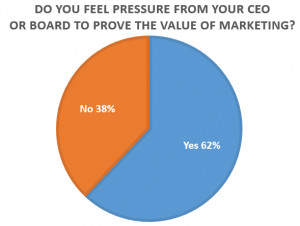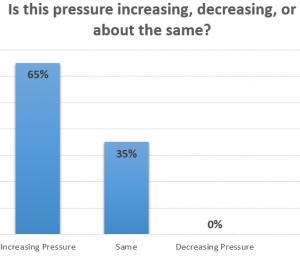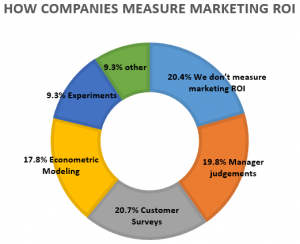How to Get Your Team on Board With CRO
Conversion optimization is good for your business. Odds are that you either aren’t doing it yet or have had a tough time getting your team on board. A lot of our readers have told us that they like the idea of conversion optimization, but they aren’t sure how to sell it within their teams.
In this post, I try to make a case that you can bring to your team as to why you should incorporate conversion optimization into your digital marketing activities.
If you aren’t familiar with our work, check out the beginner’s guide to conversion optimization before reading on.

The Scope
In order to benefit from conversion optimization, not much of a big spending shift is actually required.
Our readers tell us that they’re currently allocating most of their resources to customer acquisition. We’re not surprised by this. Research shows that paid advertising, content creation, and search engine marketing take up the top three chunks of digital advertising budgets. (source)
But is this really justified? Of course customer acquisition is an integral part of any business. But, while marketers spend so much money on getting people to their websites, they often forget about the users once on their site! In fact for every $92 spent on driving traffic to websites, only $1 is spent on user experience within the site. (source)
In order to incorporate conversion optimization, you would only need to balance the spending ratio out by a little bit – I’m talking maybe shifting from 92/1 to 82/11. Start small and it sounds pretty reasonable. Once you see your ROI increasing, it will sound more reasonable.
The Need
The days are gone that we pay for ads in the newspaper and hope that more people will walk in our store to buy our products.
Intuition-based marketing doesn’t fly anymore. According to a study by McKinsey & Company and Duke’s Fuqua business school, 62% of marketers feel pressure to prove their campaigns’ value and that pressure is only increasing. In the data age, managers and executives want results on paper – they need to see the numbers so they then can go to their superiors and show off their good work.


With this pressure to prove the value of marketing, you would expect that it’s really common to do so. Apparently not – marketers are still having a lot of trouble. According to the same survey, 20% are using manager judgement to measure ROI and another 20% don’t measure it at all. This shows that even those who recognize they need to prove their worth are struggling.
Based off these numbers and conversations with our readers, I’m guessing this problem is impacting you or someone you know. You might be doing an incredible job, responsible for bringing in way more revenue to your company, but you don’t have the numbers to back it up.
What you’re doing now is good, but your life would be way easier if you had evidence to bring to your boss or your investors that proves your value.
A Solution
Conversion optimization is a solution and can even be a silver bullet in certain cases when done right. It can help you understand and increase ROI for not only your conversion optimization endeavors, but your audience acquisition ones too. It’s based on the foundation that you’re quantitatively tracking everything that goes on in your website.
In other words: It’s a vehicle by which you do good work and end up with concrete evidence of not only that work, but all your other digital work too.
Let’s say you have a landing page that you want to optimize. You work with some CRO tools, make some hypotheses, and decide to AB test them. After the test, the results tell you that the original page had a 10% conversion rate and the new page you designed after 3 iterations of AB tests has a 15% conversion rate (this is honestly not far-fetched at all and the increase can easily be way higher; see our case studies).
If you have 1,000 visitors to the page each month and for each conversion you make 20 dollars, you’re all of a sudden making $1,000 more dollars per month.
[(15%-10%) x 1000 x $20 = $1,000]
Typical estimates for making a new landing page would be (at an hourly rate):
Tool software (heatmap, AB testing tool, others): $50
Designer’s time: $40
Programmer’s time: $40
Google Analytics: Free
(source: elance.com)
A total of $400 in costs assuming work takes a few hours would bring your ROI for this project to 150% after just the first month alone. Note that these costs are also very generous, and in reality you can get away with spending even less if doing it yourself. Of course, this assumes you have some time on your hands and the willingness to get your hands dirty.
Even more, understanding your conversion rate can help you to tie dollar amounts to the successes of your customer acquisition endeavors. For example, you can apply the same calculation to the ROI of acquiring 1000 more customers per month via Facebook. This can only happen once you’ve understood your conversion rate and how much money each conversion gets you.
If you follow this process, you will have all the evidence you need to get a bigger marketing budget and maybe even paid more. Without this information, even if you’ve done a good job, there’s no way you could make the same case.
This is reason enough to get your team on board.
Why you shouldn’t spend all your money on acquisition
PPC and SEO are maturing industries. A quick Google search of either of these will reveal the deep communities that have evolved around them. Spending here has been pretty consistent but recently started to decline a little, partly because paid content advertising is all the rage. Just look at Facebook’s profits: in the last quarter of 2012 it was 64MM and then it was 710MM in the same quarter of 2014. Companies are now pumping out content and paying to display it in users’ feeds. This type of spending is king.
There’s one major downfall to this spending, however. There is only so much room on my newsfeed, there are only so many spots to advertise in google, and there are only so many SERPS to be listed in. This intense competition to get noticed has turned into a battle to see who can spend the most money. It’s not necessarily efficient. Getting noticed by your target audience is good, but at some point it’s inefficient to keep outspending others to target more and more people.
Instead of overspending on audience acquisition, allocating some of your budget to conversion optimization is a smart idea. Conversion optimization is removed from the bidding war. Just because your competitors are also doing conversion optimization (they’re probably not), doesn’t mean you have to spend more. It’s a process involving researching, using online tools (many of which are free), and creating new pages to get your audience buying your stuff.
Of course I’m not saying you should completely ditch attracting an audience – I’m saying that you should create a harmony between that and understanding the conversion rates from this work. Only then will you know that it’s been successful. One without the other would be crazy!
Look to the future
According to a Gartner’s CMO Report, companies are planning to increase marketing budgets by 8% in 2015. You can easily demonstrate to your team that optimizing your site deserves a piece of this pie. Here’s how:
-
Find your conversion rate - This is the trickiest part. For those of you who already know it, you have a huge head start. For those of you who don’t, play around in the goal section on Google Analytics or start a free trial in Optimizely. It shouldn’t take you more than two hours to get this completed. If you’d like some advice, shoot me an email and I’ll even give you some pointers.
-
Understand – How many more page views will you get by an incremental $500 (or whatever amount) of spending on advertising or on content creation.
-
Estimate - What percent can you increase your conversion rate to. This requires some guesswork, so it’s probably worth doing a range, from 10% increase to a 50% increase. You know your business best – what’s possible?
-
Compare – What is the difference in revenue if you:
-
Get $400 worth of new visitors to your site at your current conversion rate
vs.
-
2. Get the current number of visitors to your site at your new conversion rate. Also apply this to future months, as your conversion rate won’t suddenly go down once you’ve optimized.
Take these estimates and show them to your team! Allow them to even play around with the numbers a bit and come to an agreement on what’s reasonable.
Conversion optimization is the ultimate way to incorporate analytics into your marketing plans and evaluation. Join the revolution and convert your customers before your competitors do. What’s your biggest challenge in getting your team on board? We’re curious!
-



Pingback: 3 Unexpected CRO Lessons From a Skydiver()
Pingback: AB Test Checklist: - Conversioner()
Pingback: Step-By-Step Guide To Creating A Marketing Persona()